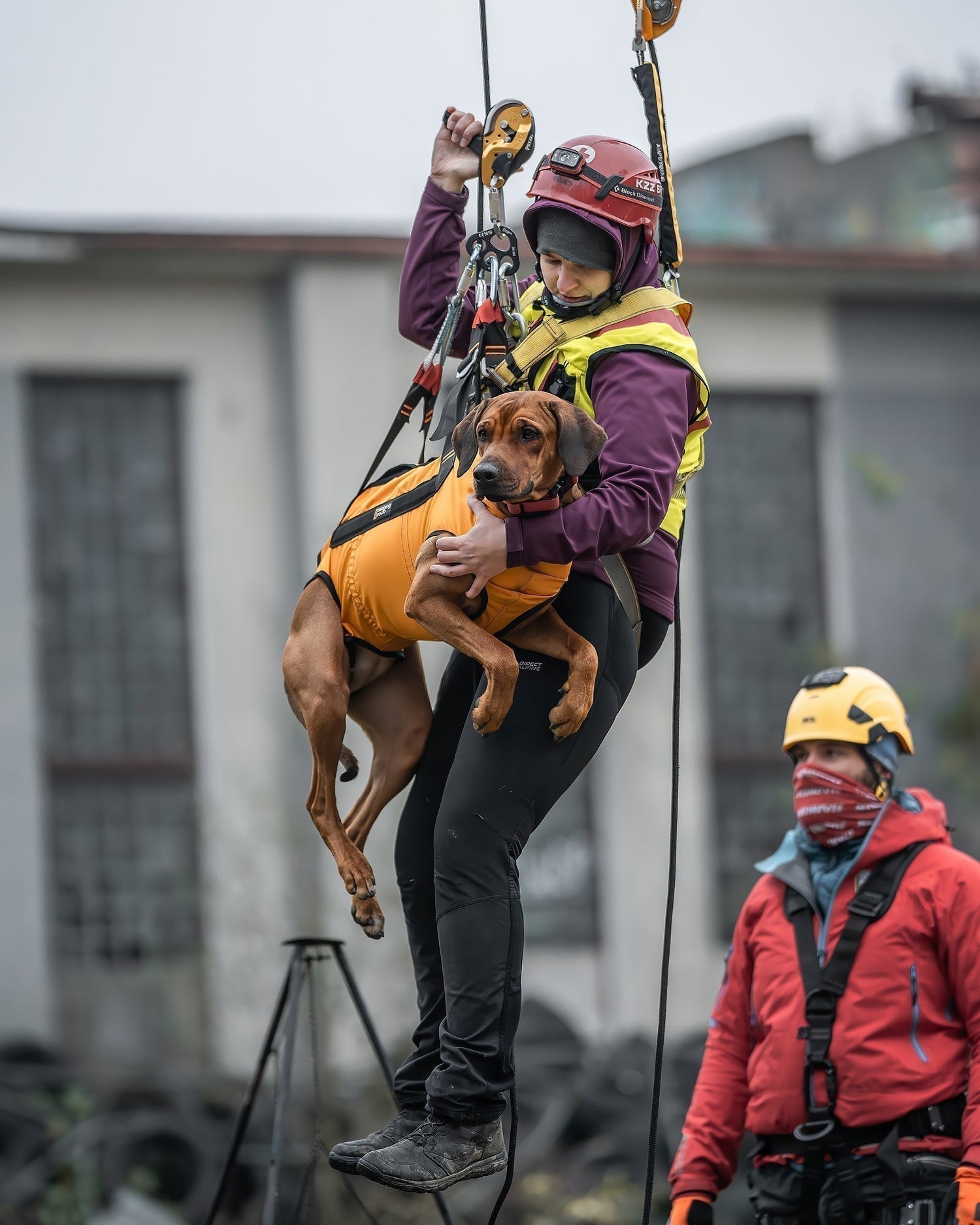Written by Pompassador @hikerroxie
SAR work has been one of the most rewarding experiences of my life.
Hey everyone! Today, I want to talk about a topic close to my heart: Search and Rescue (SAR) work with my dog, Roxie. It’s an incredible journey filled with challenges, learning, and unforgettable moments.
Why SAR?
As a 13yo child, my mom gave me a book about search and rescue dogs, and from that moment, I dreamed of being part of a SAR team. While SAR is now also a popular sport that fulfills personal ambitions, for me, it has always been about helping people in real-life missions. When I started SAR training with Roxie, I quickly realized that it’s not just about finding a missing person - it’s about trust, teamwork, and dedication.
In August 2022, when Roxie was just 3.5 months old, we joined a volunteer rescue team - Search Dogs Slovakia in Banská Bystrica, Slovakia. Under the guidance of experienced trainers Michal Dižka and Natália Dižková, we began our journey into the world of Search and Rescue (SAR). Since then, we have been continuously training and growing as part of this incredible team, working towards being ready for real missions and improving our skills in various search disciplines.

Different Types of SAR Dogs
Search and Rescue is a broad field with many different specializations. Depending on the mission, SAR dogs are trained for different tasks:
⛑️ Air-scent (or area-search) dogs – Search for human scent carried by the wind, covering large areas quickly.
⛑️ Tracking/Trailing dogs – Follow a specific person's scent along the exact path they traveled.
⛑️ Water rescue dogs – Detect and indicate scent from drowning victims in lakes, rivers, or the sea.
⛑️ Rubble search dogs – Trained to locate people trapped under collapsed buildings.
⛑️ Avalanche rescue dogs – Detect human scent under deep snow.
⛑️ Cadaver dogs – Specialize in detecting deceased individuals, used in recovery operations.
Roxie is an air-scent SAR dog, trained to search for live people. She has successfully passed exams in rubble, area, and avalanche search, proving her skills in multiple environments.

Getting Started – The First Steps
- Foundation training – Before diving into SAR work, Roxie and I focused on building a strong bond through obedience, recall, and motivation games. A solid foundation is key!
- Scent work basics – Introducing Roxie to different scents and rewarding successful finds made training fun and engaging.
- Exposure & challenges – SAR dogs work in diverse environments, so we trained in forests, rubbles, and even at night.

The Challenges & How We Overcame Them
Distractions & confidence building
New places, noises, and people can be overwhelming. We practiced staying calm and focused in different locations, gradually increasing the difficulty. For example, we did obedience training in the city centre, where many people were walking around.
Weather & gear
SAR work doesn’t stop for rain or cold! While Roxie can’t wear clothes while searching (for safety reasons), I use Pomppa gear during conditioning training, or when she waits in the car for her turn, or when we camp overnight in cold weather. Keeping her warm and dry helps her stay focused.
Endurance & mental focus
SAR missions can be long and physically demanding. We built stamina through structured play, long hikes, and varied training sessions. Roxie also does fitness training like walking on a water treadmill and conditioning exercises to keep her in good shape.

My Top SAR Training Tips
Make it a game
Keep training fun with rewards like favourite toys or treats.
Patience is key
Every dog learns at their own pace. Some start alerting as puppies, but Roxie only began alerting by barking to signal a find at around one year old. Since barking isn’t typical for ridgebacks, I had to give her the space to grow into it. Always let your dog learn at their own comfort level!
Train in different environments
The more variety, the more confident your dog will be. We train with different sounds and distractions, sometimes practicing with multiple dogs working nearby or with people walking around while dog is searching.
Trust your dog
Their instincts are powerful, and sometimes they teach us more than we teach them! A SAR judge once told a funny story: during an exam, the victim was near a puddle. When the Labrador or Retriever teams reached the area, the handlers immediately recalled their dogs, thinking they just wanted to jump in and play. But in reality, the dogs had already caught the victim’s scent. So, trust your dog!

What SAR Has Taught Me
SAR work has been one of the most rewarding experiences of my life. It has strengthened my bond with Roxie and shown me just how incredible these dogs truly are. Whether you’re interested in SAR or simply looking for ways to engage your dog’s natural instincts, I highly recommend trying scent work - it’s a game-changer!
– Pompassador @hikerroxie on Instagram

